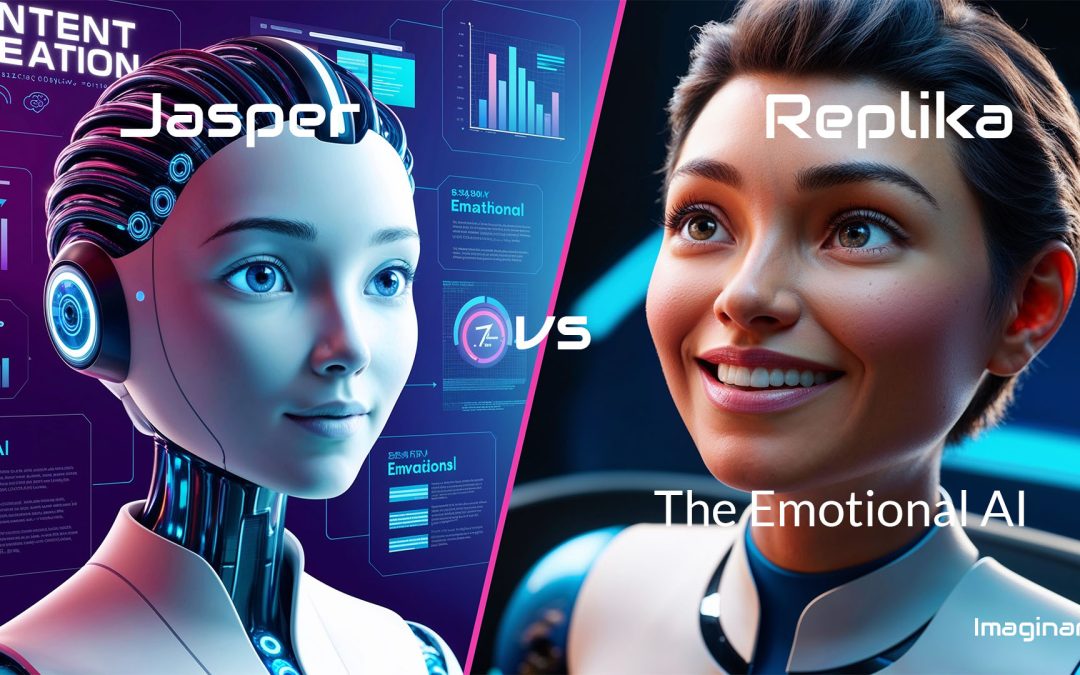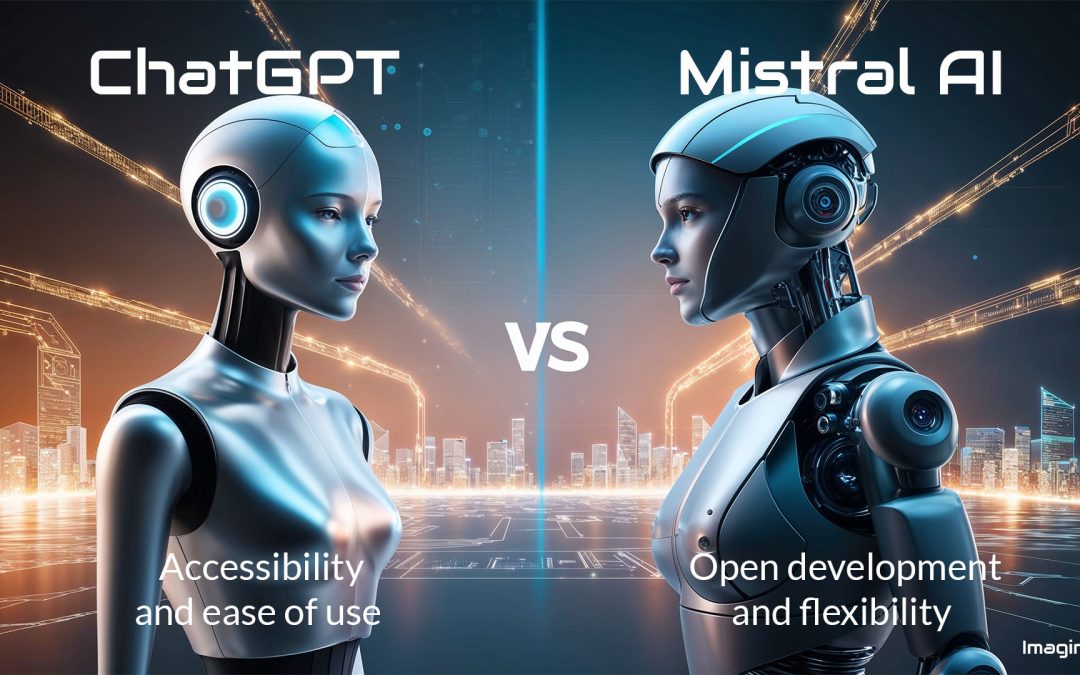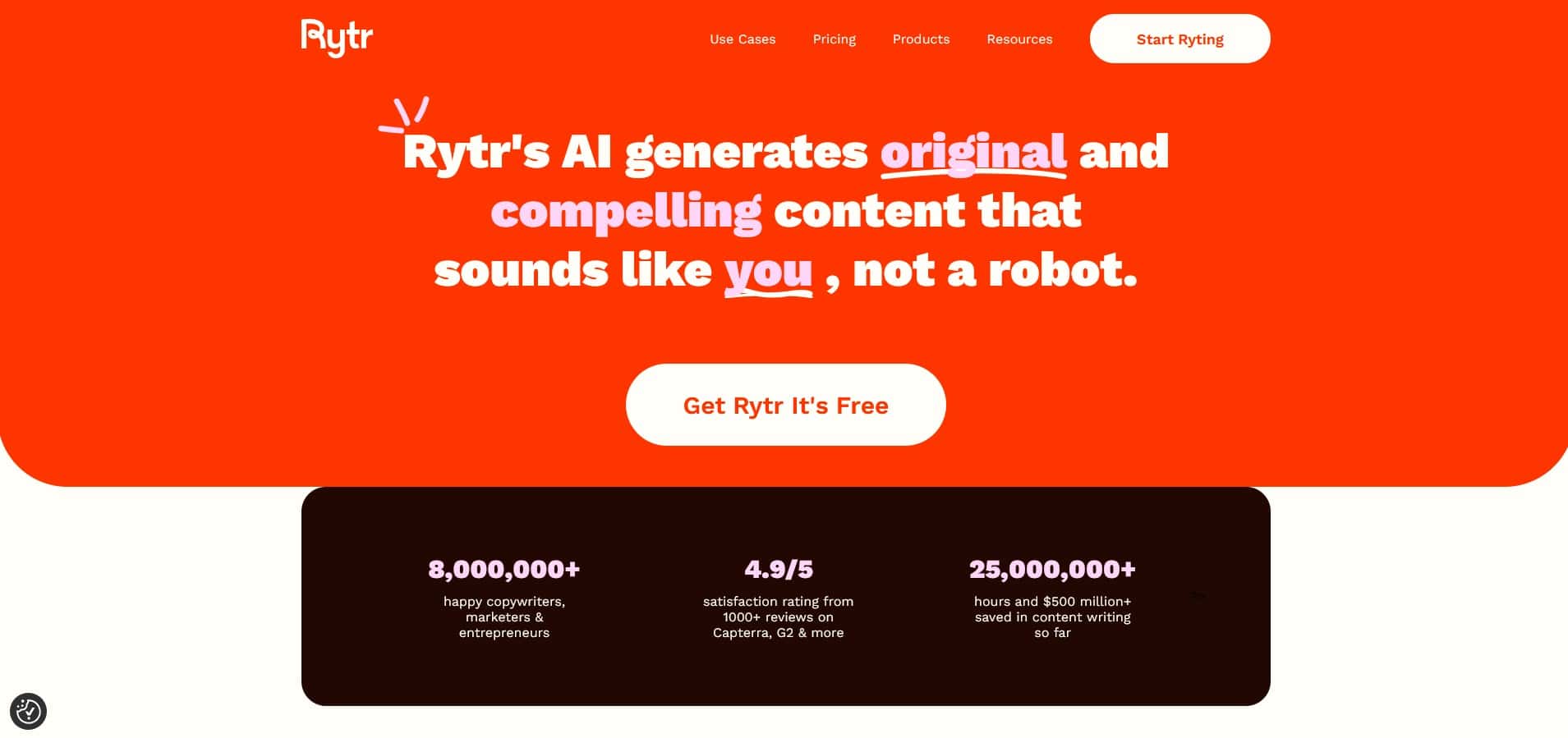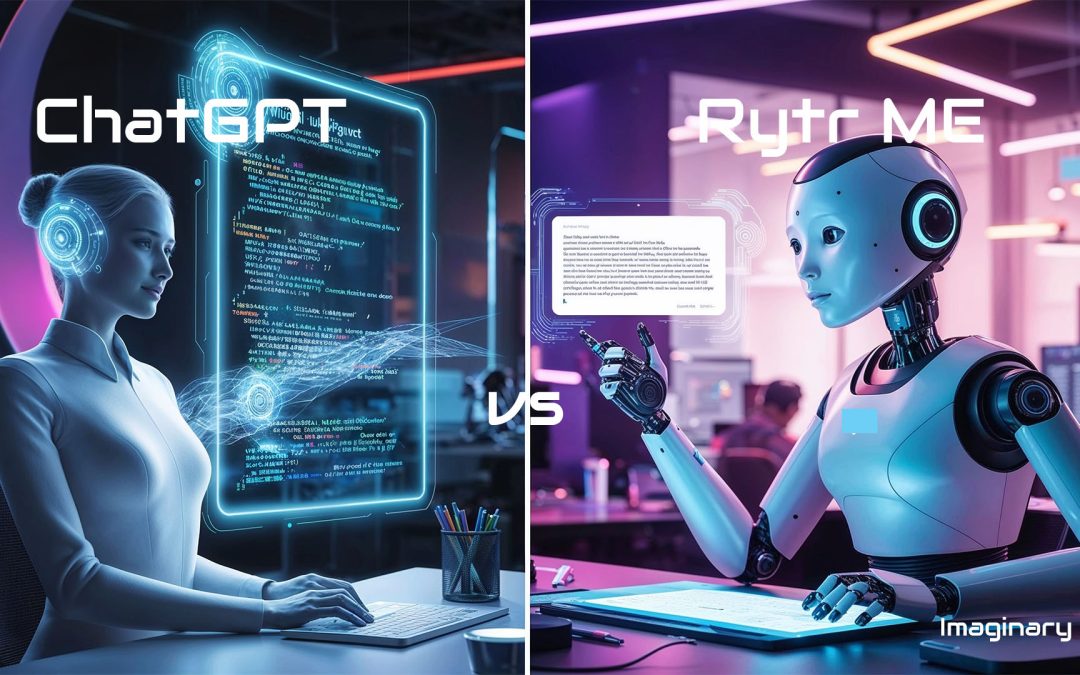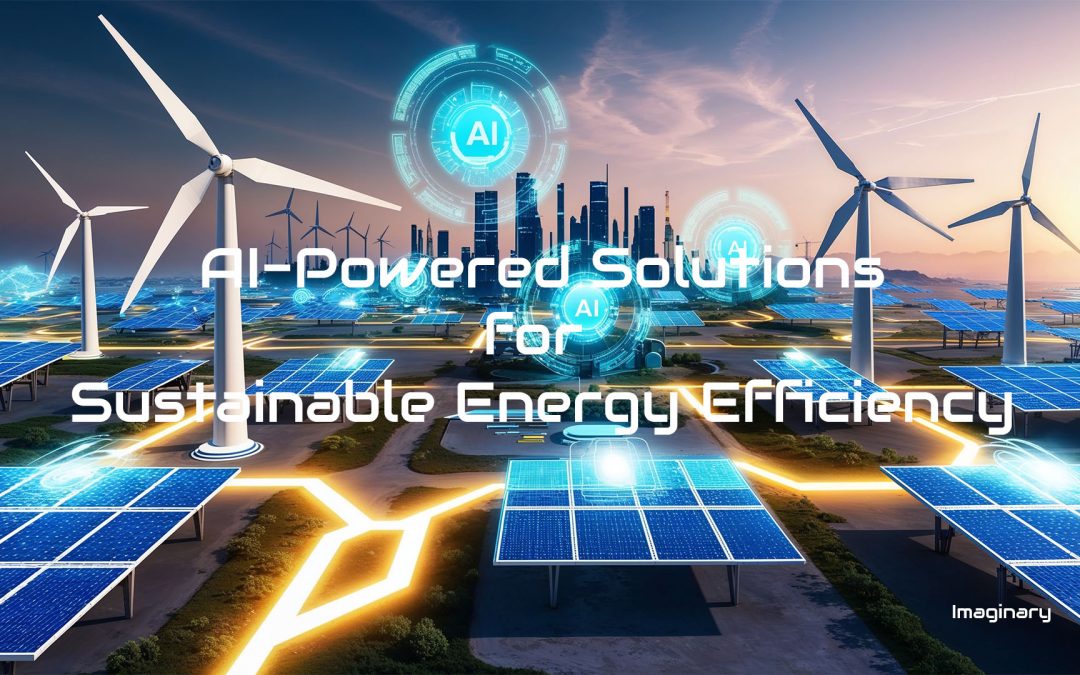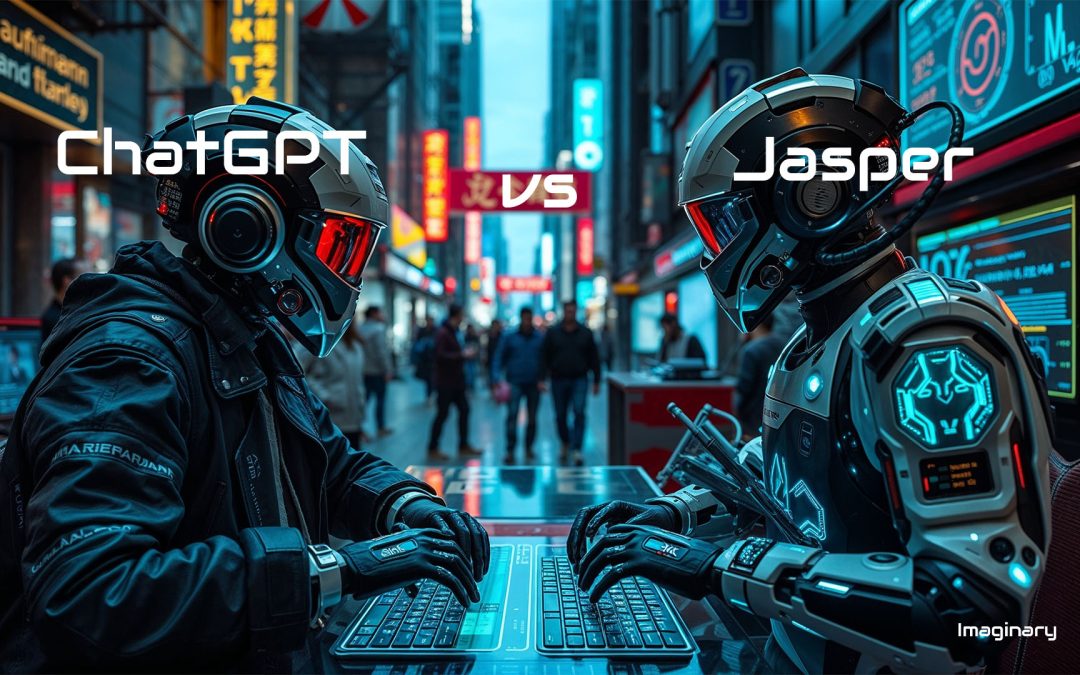
ChatGPT vs Jasper: The Ultimate AI Writing Showdown in 2025?
This detailed comparison between ChatGPT and Jasper is a part of our AI Tools Comparison Series, which explores the best tools shaping the AI landscape.
Introduction – ChatGPT vs Jasper
The rapid evolution of AI-powered writing tools has transformed how individuals and businesses create content.
Two of the most talked-about tools in this space are ChatGPT and Jasper AI. Both offer advanced AI-driven capabilities, but which one is the best for your needs?
This article provides an in-depth ChatGPT vs Jasper comparison, covering features, usability, pricing, and more to help you make an informed decision.
ChatGPT
Developed by OpenAI, ChatGPT is a powerful conversational AI model that excels in natural language understanding and generation.
It is widely used for content creation, customer service, programming help, and brainstorming.
Key Features:
- Conversational AI with human-like responses
- Supports multiple content formats (articles, essays, coding, and more)
- Can be fine-tuned with custom instructions
- Offers both free and premium versions (GPT-4 with Plus subscription)
Jasper AI
Jasper AI (formerly Jarvis) is a writing assistant designed for marketing, business, and creative professionals.
It generates high-quality content efficiently.
Key Features:
- Pre-built templates for blog posts, ads, social media, and sales copy
- AI-powered tone adjustment and brand voice customization
- Integrations with Surfer SEO for optimized content
- Supports over 25 languages
Ease of Use – ChatGPT vs Jasper
ChatGPT
ChatGPT offers a straightforward, chat-based interface. Users can provide prompts, and the AI generates responses in real time.
While it lacks dedicated templates, its flexible input allows diverse content creation.
Jasper AI
Jasper provides a structured workflow with templates, making it ideal for marketing and business content.
The learning curve is slightly higher due to its multiple features and integrations.
Winner: Jasper AI for structured content, ChatGPT for general use.
Content Quality and Accuracy – ChatGPT vs Jasper
ChatGPT
- Generates high-quality, context-aware responses
- It can sometimes be verbose or overly general
- Requires user refinement for precise outputs
Jasper AI
- Specializes in marketing, sales, and brand-aligned content
- Less conversational but more structured
- Integrated SEO features for optimized content
Winner: It depends on the use case. ChatGPT is used for creative tasks, and Jasper is used for structured marketing content.
Use Cases – ChatGPT vs Jasper
| Feature | ChatGPT | Jasper AI |
|---|---|---|
| Blog Writing | ✅ Yes | ✅ Yes |
| SEO Optimization | ❌ No | ✅ Yes |
| Social Media | ✅ Yes | ✅ Yes |
| Business Copywriting | ❌ Limited | ✅ Yes |
| Programming Assistance | ✅ Yes | ❌ No |
| Chatbot Development | ✅ Yes | ❌ No |
Winner: Jasper for marketing, ChatGPT for general AI use.
Pricing
ChatGPT Pricing
- Free Plan: GPT-3.5 model
- ChatGPT Plus: $20/month (GPT-4 access)
Jasper AI Pricing
- Creator Plan: $39/month
- Teams Plan: $99/month
- Business Plan: Custom pricing
Winner: ChatGPT for affordability, Jasper for marketing power.
❓ FAQs – ChatGPT vs Jasper
Which AI tool is better for SEO content?
Jasper AI generally performs better for SEO workflows thanks to its Surfer SEO integration and template-based briefs.
Does ChatGPT support content templates?
Not natively. However, you can mimic templates by saving reusable prompts and frameworks.
Can Jasper AI generate code like ChatGPT?
No. Jasper focuses on marketing/content writing. ChatGPT is stronger for coding tasks and explanations.
Which is more affordable?
ChatGPT offers a free tier; Jasper requires a paid subscription, which may be pricier for solo users.
Is Jasper AI good for writing novels?
It can help with outlines and copy, but ChatGPT is typically more flexible for long-form storytelling.
Does Jasper AI have a free plan?
No. Jasper is paid-only (trial/promos may vary).
Is ChatGPT better for casual users?
Yes. The free access and conversational UX make ChatGPT more approachable for casual usage.
Which tool provides better customer support?
Jasper offers dedicated business support on higher plans; ChatGPT relies more on documentation and community.
Can ChatGPT be used for social media posts?
Yes. Jasper’s ready-made templates speed things up, but ChatGPT works well with prompt frameworks.
Is Jasper AI better for ad copywriting?
Often yes. Jasper’s templates and tone controls are optimized for persuasive, short-form copy.
Conclusion and Summary – ChatGPT vs Jasper
Both ChatGPT and Jasper AI excel in different areas. ChatGPT is a fantastic choice if you’re looking for a cost-effective and versatile AI assistant.
However, if you’re a marketer, business owner, or SEO-focused writer, Jasper AI provides powerful content-generation tools tailored to your needs.
Final Verdict:
- Best for General AI Use: ChatGPT
- Best for Marketing and Business Copy: Jasper AI
📚 Related Posts You May Be Interested In
- ChatGPT vs. 11 Powerful AI Tools ⬈
- ChatGPT vs Microsoft Copilot ⬈
- ChatGPT vs Bing AI ⬈
- ChatGPT vs Perplexity AI ⬈
- Jasper vs Writesonic ⬈
- Jasper vs Rytr ⬈
This post is part of the AI Tools Comparison Series ⬈ and the broader Emerging Technologies Guide ⬈.
Thanks for reading.
Resources – ChatGPT vs Jasper
- ChatGPT by OpenAI ⬈
- Jasper – The AI Copywriting Specialist ⬈
- Surfer – SEO for Content Optimization ⬈
- Copyblogger – Content Marketing Tools and Training ⬈
ℹ️ Note: Due to the ongoing development of applications and websites, the actual appearance of the websites shown may differ from the images displayed here.
The cover image was created using Leonardo AI ⬈.



